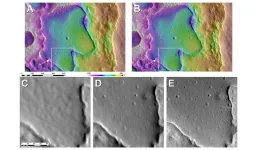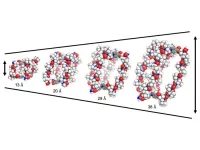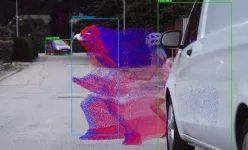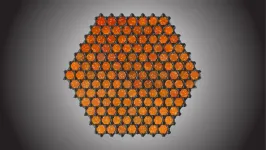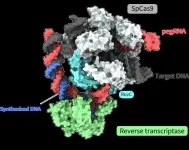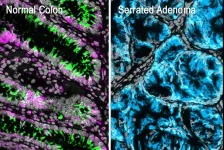(Press-News.org) Darío Gil, Ph.D., IBM Senior Vice President and Director of Research and a member of the Board of Trustees for Rensselaer Polytechnic Institute (RPI), has been elected chair of the National Science Board (NSB).
The NSB is the governing board of the National Science Foundation (NSF) and adviser to Congress and the President on policy matters related to STEM research and STEM education.
“Darío Gil’s insights and innovative thinking will be indispensable to his leadership of the NSB,” said RPI President Martin A. Schmidt, Ph.D. “His election speaks volumes about his exceptional talents and dedication to advancing science and underscores the crucial role that industry plays in shaping the future of research and innovation. His leadership will undoubtedly usher in a new era of collaboration and progress, bridging the gap between academia and industry to tackle the most pressing challenges facing our world today.”
It has been more than 30 years since the NSB had a chair who was working in industry at the time of his or her election. Of the three previous industry leaders on the NSB, two had strong affiliations with RPI: Dr. Mary Good (AlliedSignal) and Dr. Roland Schmitt (GE). Dr. Good was also a member of RPI’s Board of Trustees and Dr. Schmitt was RPI’s president 1988-1993.
“I look forward to working with my colleagues to build bridges across the federal, business, academia, and philanthropy worlds to renew our commitments to STEM education, workforce development, and to tackling ambitious grand challenges to outpace our greatest strategic competitors,” says Gil. “It is time to join forces across sectors to ensure the long-term success of the United States.”
Gil also has the distinction of being one of only three NSB chairs under 50 at time of election.
Gil is a member of the NSB class of 2020-2026. Over the last two years, he chaired the Board’s Committee on External Engagement, leading the Board’s engagement strategy and initiatives. Gil has also served on NSB’s Committee on Strategy and chaired the sub-committee on Technology, Innovation and Partnerships, which worked with the NSF to launch the agency’s first new directorate in 30 years.
As Senior Vice President and Director of IBM Research, Gil is responsible for one of the world’s largest and most influential corporate research labs, with over 3,000 researchers. He leads the technical community of IBM, directing innovation strategies in hybrid cloud, AI, semiconductors, quantum computing, and exploratory science.
Gil, who received his Ph.D. in Electrical Engineering and Computer Science from MIT, was recently elected to the National Academy of Engineering for his contributions to the “advancement and practical use of artificial intelligence and quantum computing in industry and society.” An advocate of collaborative research models, Gil co-chairs the Executive Board of the International Science Reserve, a global network of open scientific communities that provides specialized resources to prepare for and help mitigate urgent, complex global challenges. Gil has served on the President’s Council of Science and Technology Advisors and serves on the boards of the Semiconductor Industry Association, the Center for Strategic and International Studies, the New York Academy of Sciences, the New York Hall of Science, and Rensselaer Polytechnic Institute.
###
About Rensselaer Polytechnic Institute:
Founded in 1824 for the application of science to the common purposes of life, Rensselaer Polytechnic Institute is the first technological research university in the United States. Today, it is recognized as a premier university, noted for its robust and holistic learning community that connects creativity with science and technology. RPI is dedicated to inventing for the future, from shaping the scientists, engineers, technologists, architects, and entrepreneurs who will define what’s next for humanity, to research that bridges disciplines to solve the world's toughest problems. Learn more at rpi.edu.
Contact:
Tracey Leibach
leibat@rpi.edu
518-276-3021
For general inquiries: newsmedia@rpi.edu
Visit the Rensselaer research and discovery blog: https://everydaymatters.rpi.edu/
Follow us on Twitter: @RPINews
END
PROVIDENCE, R.I. [Brown University] — A new study by Brown University researchers may help redefine how scientists map the surface of the Moon, making the process more streamlined and precise than ever before.
Published in the Planetary Science Journal, the research by Brown scholars Benjamin Boatwright and James Head describes enhancements to a mapping technique called shape-from-shading. The technique is used to create detailed models of lunar terrain, outlining craters, ridges, slopes and other surface hazards. By analyzing the way light hits different surfaces of the Moon, it allows researchers to estimate the three-dimensional ...
Professor Dariusz Stramski of Scripps Institution of Oceanography at UC San Diego has been selected by The Oceanography Society as the 2024 recipient of the Nils Gunnar Jerlov Medal in recognition of his significant and wide-ranging contributions to the field of optical oceanography.
With a distinguished career spanning over 40 years, Dr. Stramski has made profound impacts on the study of ocean optics. Born in Poland, Stramski received his M.S. with honors in oceanography (1978) and Ph.D. in Earth ...
(Toronto, May 28, 2024) A new study in JMIR Cardio, published by JMIR Publications, shows that a fully digital, artificial intelligence (AI)–driven lifestyle coaching program can effectively reduce blood pressure (BP) in adults with hypertension. This AI-based program leverages data from wearable activity trackers and BP monitors as well as a mobile app questionnaire to tailor lifestyle guidance. The research team, led by Jared Leitner of the University of California, San Diego, used this innovative intervention to help manage ...
A team of researchers at the University of Waterloo have developed a new machine-learning method that detects hate speech on social media platforms with 88 per cent accuracy, saving employees from hundreds of hours of emotionally damaging work.
The method, dubbed the Multi-Modal Discussion Transformer (mDT), can understand the relationship between text and images as well as put comments in greater context, unlike previous hate speech detection methods. This is particularly helpful in reducing false positives, which are often ...
A new method of drug delivery using proline, an amino acid found in chicken feathers and skin tissue, could be used to limit the side effects of chemotherapy and repair important enzymes, new research suggests.
Published in the journal Chem today, researchers have designed a cage (a box made of single molecules) from biologically compatible peptides, short amino acids that form the basis of proteins. These cages can house drugs of different sizes and transport them in the body with high levels of precision.
The negative ...
It’s every driver’s nightmare: a pedestrian stepping out in front of the car seemingly out of nowhere, leaving only a fraction of a second to brake or steer the wheel and avoid the worst. Some cars now have camera systems that can alert the driver or activate emergency braking. But these systems are not yet fast or reliable enough, and they will need to improve dramatically if they are to be used in autonomous vehicles where there is no human behind the wheel.
Quicker detection using less computational ...
Graphene has been called “the wonder material of the 21st century.” Since its discovery in 2004, the material—a single layer of carbon atoms—has been touted for its host of unique properties, which include ultra-high electrical conductivity and remarkable tensile strength. It has the potential to transform electronics, energy storage, sensors, biomedical devices, and more. But graphene has had a dirty little secret: it's dirty.
Now, engineers at Columbia University and colleagues at the University of Montreal and the National Institute of Standards and Technology are poised to clean things up with an oxygen-free chemical vapor ...
In a study of Medicare beneficiaries, researchers from Brigham and Women’s Hospital found that one year after hospitalization for heart failure, 6 percent of patients had progressed to dialysis.
KEY TAKEAWAYS
Study led by Brigham researchers found that among older adults hospitalized for heart failure, nearly 3 in 4 were discharged with reduced kidney function.
Lower kidney function was associated with substantially higher risk of kidney complications and other adverse clinical outcomes among older adults, with more than 1 in 20 progressing to dialysis within one year after heart failure hospitalization.
These findings emphasize the need ...
Joint research led by Yutaro Shuto, Ryoya Nakagawa, and Osamu Nureki of the University of Tokyo determined the spatial structure of various processes of a novel gene-editing tool called “prime editor.” Functional analysis based on these structures also revealed how a “prime editor” could achieve reverse transcription, synthesizing DNA from RNA, without “cutting” both strands of the double helix. Clarifying these molecular mechanisms contributes greatly to designing gene-editing tools accurate enough for gene therapy treatments. The findings were published in the journal Nature.
The ...
Research led by Weill Cornell Medicine provides new evidence that most colorectal cancers begin with the loss of intestinal stem cells, even before cancer-causing genetic alterations appear. The results, published on May 29 in Developmental Cell, overturn the prevailing theory for colorectal tumor initiation and suggest new ways to diagnose the disease before it has a chance to become established.
“Colorectal cancer is very, very heterogeneous, which has made it difficult for many years to classify these tumors in order to inform therapy,” said senior author Dr. ...

